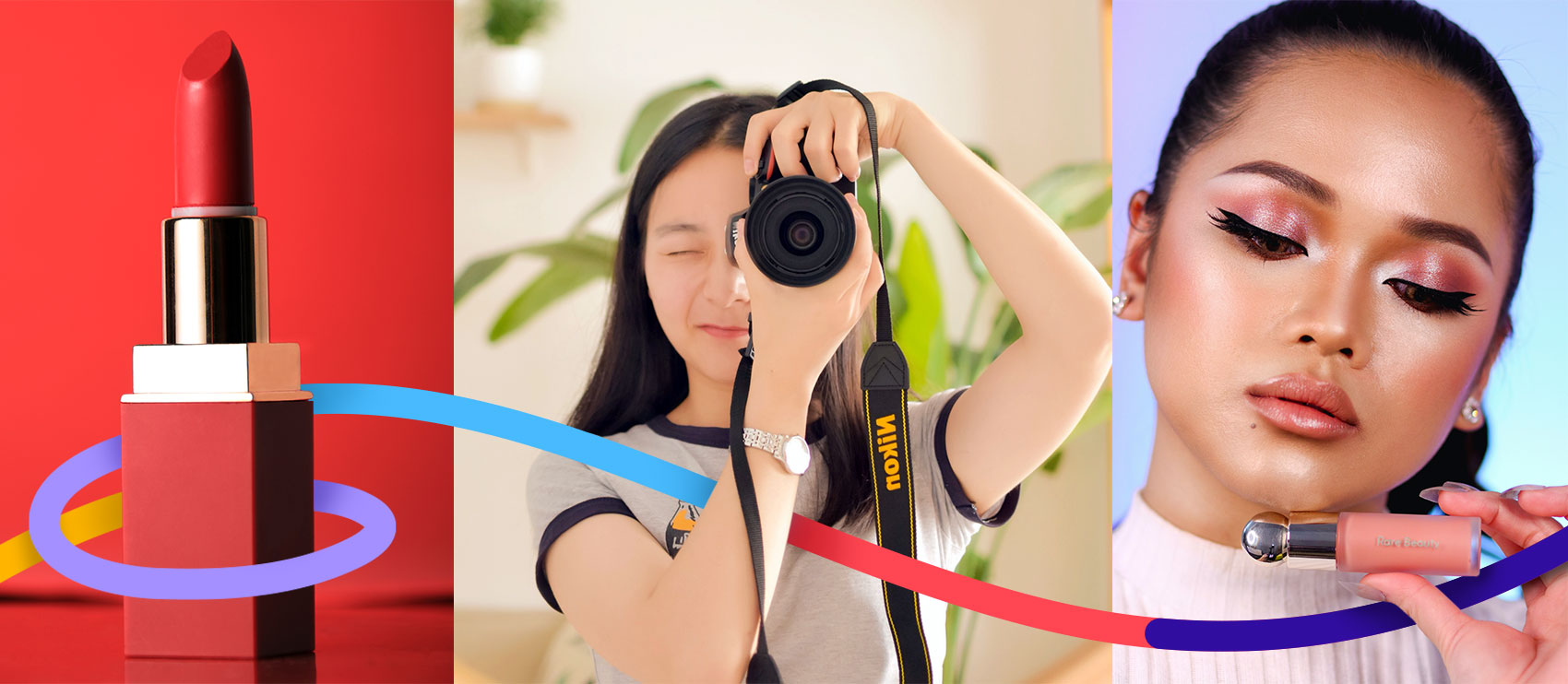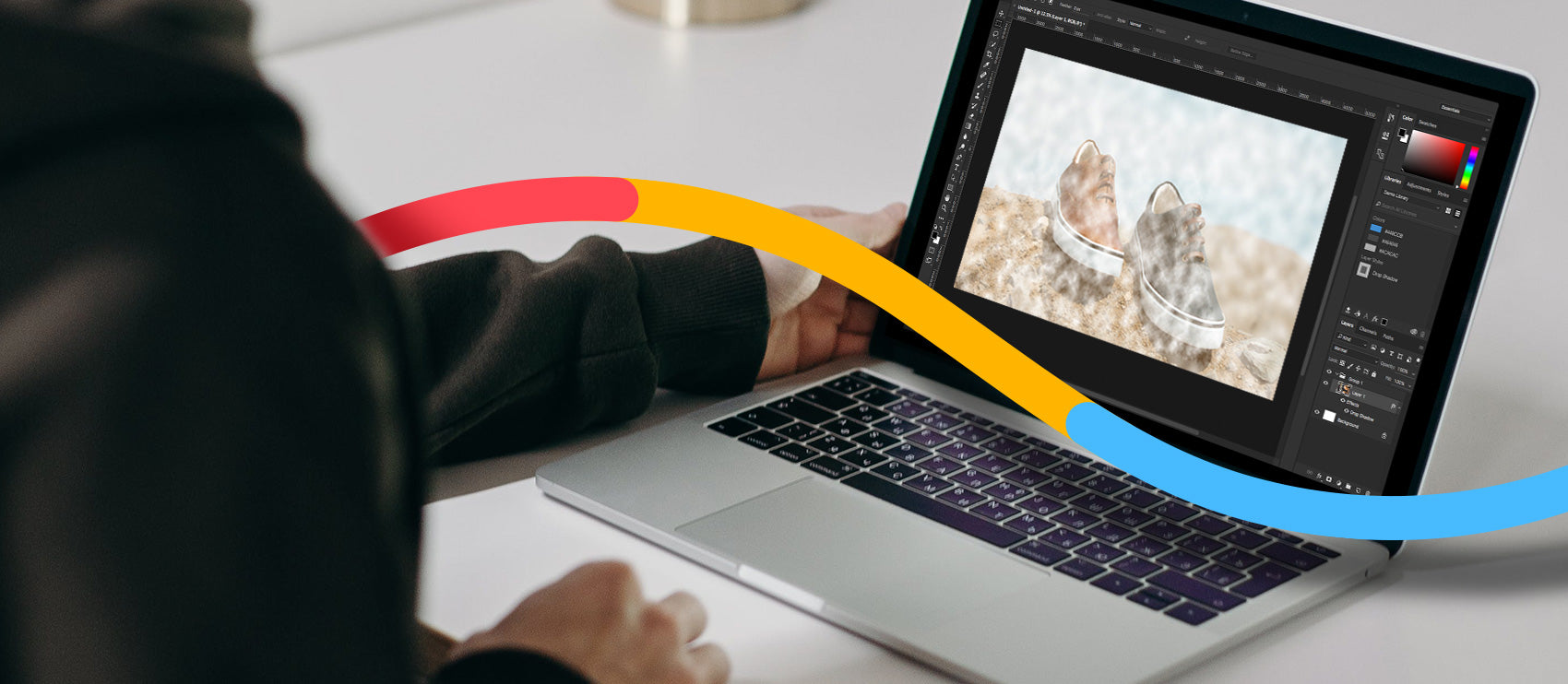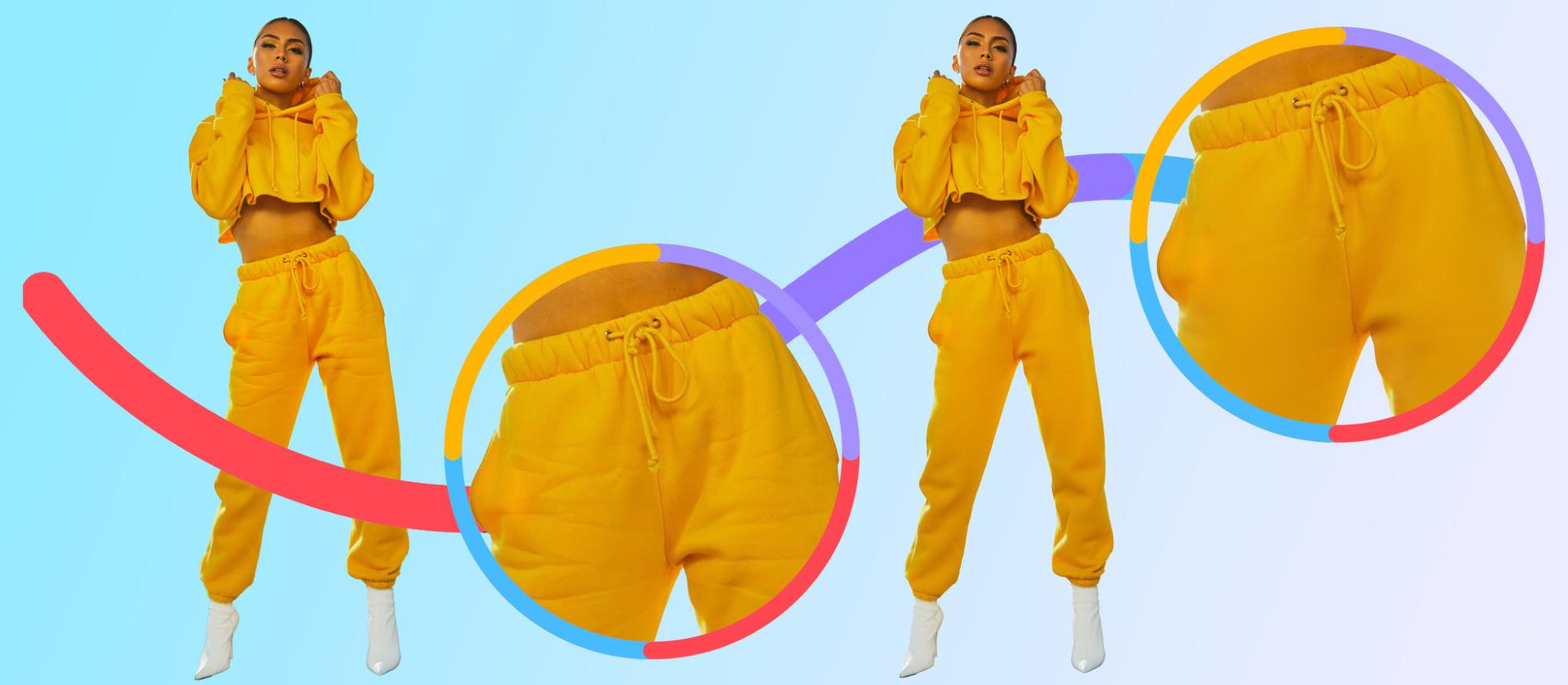We’ll cut right to the chase: Photo editing is a MUST.
This is particularly true in ecommerce, where product photography makes or breaks the buying decision.
A study by Etsy found that 90% of shoppers said that the quality of photos were "extremely important" or "very important" to their buying decision.
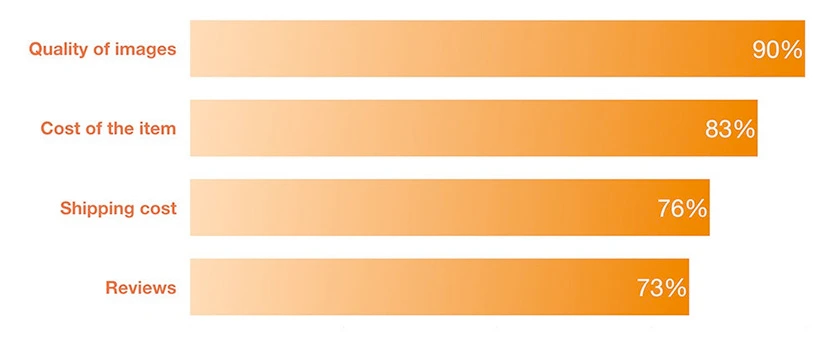
Top-notch product photos are critical to turning visitors into buyers, which is why editing your images is key. You need to ensure that your photos showcase your merch in the best possible light.
Receive free ecommerce & product photography tips
Doing that, however, takes time. Between selecting the best shots, cleaning up the background, and retouching your images, getting your product photos right requires hours if not days. In fact, it takes one-fifth of businesses more than 30 minutes to edit a single image. Considering each product has more than one image, that time can really add up if you have a major product launch coming up.
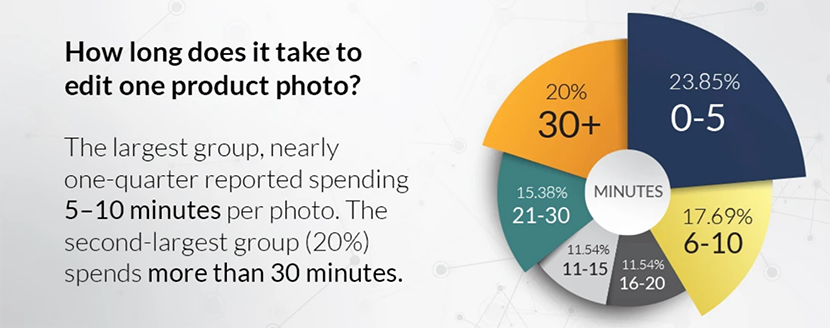
That’s why it’s worth considering whether you should edit photos in-house or outsource it.
Both sides have their advantages and disadvantages, and in some cases it may even make sense to adopt a hybrid set-up where you outsource certain tasks while doing a handful of editing yourself.
Let’s explore this topic in more detail, so you can decide which approach is right for you.
In this article:
- Outsourcing vs. in-house photo editing
- Pros and cons of editing your photos in-house
- Pros and cons of outsourcing your photo editing
- How to choose between outsourcing your photo edits vs. doing them in-house
- Photo editing: Which edits to outsource and which to do in-house?
- The bottom line
Outsourcing vs. in-house photo editing
Before diving into the nitty gritty of outsourcing vs. in-house, let’s iron what each approach entails.
In-house photo editing means that the photographer or company that produced the photos will take care of editing the images.
Let’s say you’re an ecommerce merchant who shoots your own product photos. If you opt for in-house photo editing, then you and your team will also be in charge of tasks like image retouching, masking, clipping, etc.
On the other hand, outsourcing is when the photographer or company pays a third party to handle their photo editing. The images are sent out to a contractor or company, who will then edit the photos before sending them back to the photographer or company.
Pros and cons of editing your photos in-house
Pro: more creative control
The biggest reason photographers and other companies opt to edit photos themselves is they get full control over the look and feel of the images.
If you have very specific branding needs or have a certain vision for how you want the photo to come out, you’ll benefit more from doing photo edits in-house.
“As a web design agency, we will always have a clear style in mind for any photography we use for our clients,” says Sam Orchard, creative director at the web design agency Edge of the Web.
“For us, it’s much easier to make use of the resources we have to edit the photos in exactly the way we need, rather than trying to communicate that to a third party and leaving it to them to try to execute our vision,” he adds.
That said, it’s possible for a contractor to execute your vision if you a) find the right person or team; and b) invest the time in explaining what you need and in building a relationship with them.
As photographer Mike Nakamura explains, “When a photographer decides to work with a retoucher for regular ongoing projects, they will evolve over time to understand what extent of finishing is desired for the photographer’s look. Investing this time is absolutely required to achieve the best results.”
Another tip? Double down on communication.
Alex Tran, digital marketing specialist at Hollingsworth LLC, says that outsourcing success starts with finding the right partner and then communicating your needs effectively. "If you have a vision or clear instructions, communicate with the outsourcing team and give them creative direction as to what photos you need for your campaign or product pages," he advises.
Pro: Financial savings
Outsourcing your photo editing needs comes with certain costs. If you have a small product catalog and you only need to edit a dozen or fewer photos, then it makes sense to just do it yourself.
However, if you’re dealing with hundreds or more photos, then editing them in-house will take up your time and prevent you from devoting your energy to other areas of your business.
Which brings us to our next point...
Con: Eats up your time
It’s one thing to edit a photo or two, but what if you had to crop, retouch, resize, and clean up the background of hundreds of images?
Quality photo editing takes time, so the DIY route can limit the resources and energy that you could be putting into other areas of your business — such as taking on additional projects or finding new clients.

The adage “time is money” rings very true here. While you may save money from doing the work yourself, the opportunity cost of missing out on business growth and the stress that comes with DIY-ing the job are greater than the money you spend on outsourcing.
Pros and cons of outsourcing your photo editing
Pro: Expert-level edits
When you outsource photo editing, you’re handing off the task to a vendor who specializes in it. They have more experience, and can likely do it better than you can. This leads to higher-quality photos, and ultimately, higher-quality results.
“I have experience in both in-house photo editing and outsourcing, and at the beginning of my business, I had to do most things myself, including photos,” recalls Eimantas Aukstikalnis of NordFur.com.
“I’m not a professional, and the result was just okay. The same was with my sales,” he adds. “Later, I decided to have a professional photoshoot, and the results were amazing: Conversions increased by nearly 200%, from 0.7% with low-quality photos to 1.9% with professional photos. Another great thing about these photos is that I found them shared by people and bloggers, which helps my brand grow.”
Pro: Faster turnaround
In addition to doing it better, expert photo editors will likely complete the job at a faster turnaround.
This means if you’re a photographer, you can deliver on jobs more quickly. And if you have an ecommerce site, you’ll be able to get those photos live much sooner — ahead of your competition.
Pro: Frees up your time and resources
We alluded to this earlier, but it’s worth repeating: Outsourcing your photo editing frees up your time to do other things. Whether it’s working on business goals or taking time to unwind, you can rest easy, knowing that the tedious task of editing your photos is taken care of by a pro.
Tran says that outsourcing product photo edits has helped him and his team focus on other important business tasks.
“Outsourcing has allowed us to dedicate our resources to other functions such as following-up with sales leads, focusing on customer satisfaction and service, and retail sourcing and fulfillment,” he says.
Con: Limited control
When you hand off photo editing to a third party, there’s always a risk of the vendor not getting the details “just right.” This is the case when it comes to creative projects, such as those involving lifestyle shots and special effects.
If you value your creative freedom and want your photos handled in a very specific way, then consider doing your edits in-house.
Furniture retailer Pavilion Broadway is one example of a company that prefers to handle photo edits internally. “We edit all of our photos in-house, having previously hired third party photographers,” says Nathan Thompson, who handles digital marketing at Pavilion Broadway. “It’s not that we felt one was necessarily ‘better’ than the other, but we felt that having full autonomy over how our photography is shot and styled would give us a competitive advantage.”
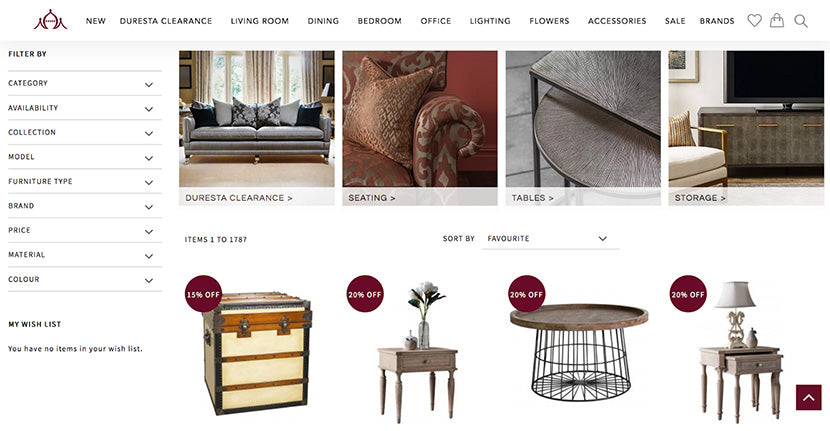
Con: Upfront cost
Hiring someone else to do your photo editing will cost money, so you’ll need to factor it into your budget.
Be sure to run the numbers when calculating the fees of outsourcing versus doing it in-house. Assign a dollar amount to the time spent editing the photos yourself and see how it stacks up against the fees of your vendor. You may find that the costs of doing the job in-house is higher, especially if you have a lot of photos.
“For brands who have a high turnover of ecommerce product photos, outsourcing can definitely be worth it,” says Rachel Kaiser, project manager at the photography website ShotKit. “To do the editing in-house would require some budget anyway — and, depending on the location of the brand, there's a good chance that outsourcing offshore would work out cheaper.”
How to choose between outsourcing your photo edits versus doing it in-house
Now that we’ve covered the basics of outsourcing versus in-house photo edits, let’s talk about how to decide which approach is right for you.
There isn’t a definitive answer here, since the photo editing needs of every business is different. But the following questions will point you in the right direction.
How many images do you need to edit?
The amount of photos you need is a big factor. Generally, if you have dozens or more images to edit, you’re better off outsourcing the job to a pro. That way, you and your team can focus on higher-level tasks in your business.
If you do decide to outsource, be sure to ask your vendor about any image limits they have when it comes to editing. Path, for instance, doesn’t limit the photos you can submit.
When is your deadline?
Track how much time it takes for you to edit your photos in-house and compare it with the turnaround time of an outside vendor.
If you have a looming deadline and can’t handle the job in-house, it makes more sense to outsource it. On the other hand, if you and your team can edit images fairly quickly and don’t want to go back and forth with a third party, then you may opt to do it in-house.
What’s your budget?
How much are you able (and willing) to spend on photo editing? Obtain quotes from third party vendors to get an idea of how much you would need to budget for the job. Compare that amount with the costs (i.e., time, opportunity cost, etc.) of doing it in-house, then make your decision from there.
How hands-on do you want to be?
Do you want photo editing to be a highly collaborative process where you work closely with people as they edit the images? If so, having an in-house team handle your edits would likely be a better option for you.
But if you’re comfortable with handing off the photos to someone else and letting them edit it using their own style and processes, then go ahead and outsource your editing needs.
What types of edits do you need?
Basic photo edits — such as removing minor blemishes and resizing images — are much easier to do, and thus can be outsourced with minimal issues or concerns. But if you require more advanced editing or if you need your images to follow a very specific look and feel, then having an in-house team is a better way to go.
Photo editing: which edits to outsource and which ones to do in-house
Not all photo editing jobs are created equal. Some tasks may require your personal touch while others can be safely delegated to a retoucher. Let’s look at the photo edits that you should do in-house versus the ones you should outsource.
Photo edits to do in-house

Culling / photo selection. Selecting which photos to edit and display on your website should be done in-house. Aside from saving you money (you don’t want to send hundreds of photos to an editor only to use one or two) culling your photos in-house ensures that you select photos that are align with your brand.
Advanced retouching. If you have advanced photo retouching needs — let’s say, you want to change the model’s hair color to a very specific shade of brown — then you’re better off doing it in-house, so you can handle or supervise the editing process.
Photo edits to outsource
Background removal. Removing the background in photos isn’t a specialized skill, and can be done by any competent photo editor. So it’s very safe to outsource this task.

Clipping paths. Clipping path is a technique used to cut out a path or shape (e.g., your product) from an image, so the subject can be placed in a white background in or in another context. The process can be time-consuming, so it’s best to delegate it to an outside vendor.

Resizing. Changing the size of an image is easy enough to do, but it takes a lot of time if you have hundreds of photos. Do yourself a favor and outsource this job, so you and your team can focus on higher-level tasks.
Basic photo retouching. Minor retouching — such as removing blemishes and distractions — is simple but tedious work. Outsource this whenever you can.
Image masking. Another technique for separating an image or subject from the background, image masking is typically used for products with hair or fur. It takes a while to get right and requires a lot of attention to detail. In short, it’s another task best sent off to a pro.

Drop shadow. Adding a shadow effect can enhance your images and make your products look more appealing. It takes a trained and experienced photo editor to create realistic shadows, which is why you should consider outsourcing it.
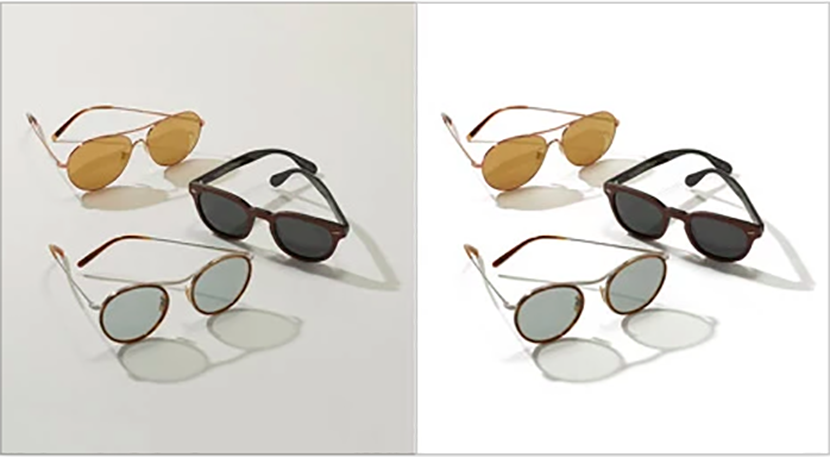
Ghost mannequin. Mannequins don’t look very attractive on product pages. So, it’s advisable to edit them out. And since removing mannequins is another one of those tedious tasks, we recommend outsourcing it to an outside vendor.
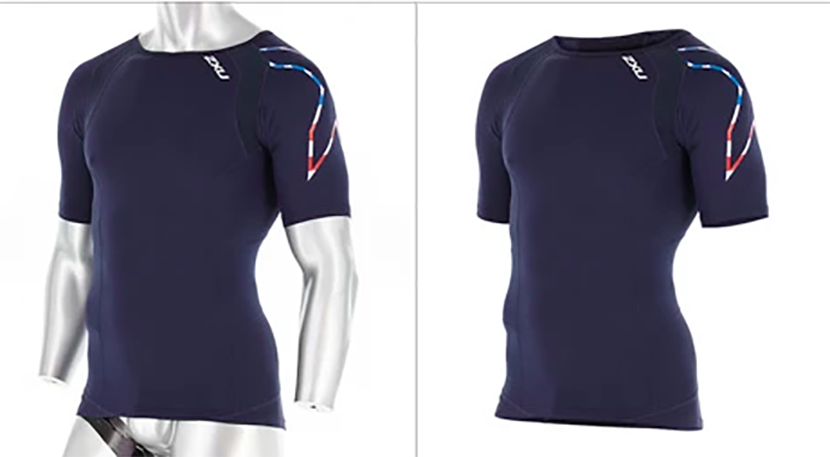
Color variants. Want to showcase your products in a new color but don’t have the time or budget to do a full fledged photoshoot? An expert photo editor can work with your existing product photos to alter their colors and add more variants.

Photo edits that can go both ways
Adding special effects — such as dynamic lighting and tilt shifts — can go either way, depending on what makes more sense for your business.
If you have the in-house talent to create the desired effect, then you can have your internal team do it. Otherwise, you’ll need to hire for it.
The bottom line
There’s no one “best” answer when it comes to outsourcing versus doing your photo edits yourself. There are a number of factors to consider, including:
- Your budget
- Your in-house editing expertise
- Your timeline
- The amount of creative control you need
The best way to figure out what works for you is to weigh all these factors and opt for the most efficient and cost-effective approach for your biz.
This post was written by Francesca Nicasio.





